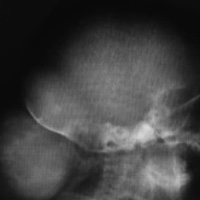A rare case of huge congenital parieto-occipital teratoma in a female infant: An unusual site of occurrence

Submitted: 27 August 2019
Accepted: 30 September 2019
Published: 7 September 2020
Accepted: 30 September 2019
Abstract Views: 175
PDF: 166
Publisher's note
All claims expressed in this article are solely those of the authors and do not necessarily represent those of their affiliated organizations, or those of the publisher, the editors and the reviewers. Any product that may be evaluated in this article or claim that may be made by its manufacturer is not guaranteed or endorsed by the publisher.
All claims expressed in this article are solely those of the authors and do not necessarily represent those of their affiliated organizations, or those of the publisher, the editors and the reviewers. Any product that may be evaluated in this article or claim that may be made by its manufacturer is not guaranteed or endorsed by the publisher.

 https://doi.org/10.4081/pjm.2020.61
https://doi.org/10.4081/pjm.2020.61



